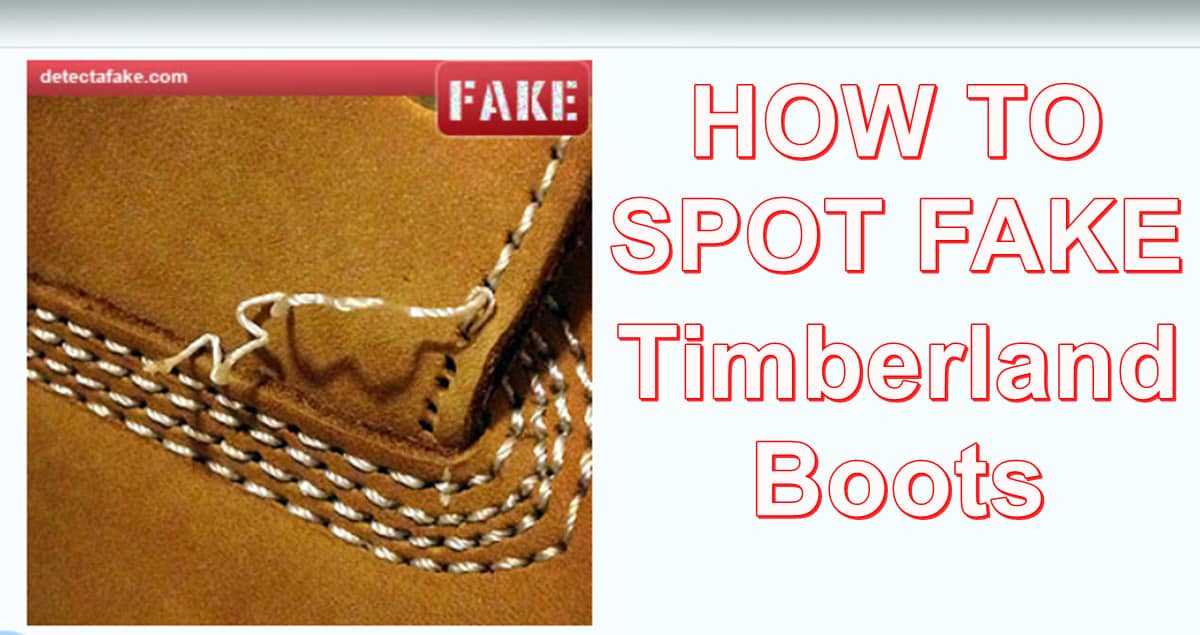How to Spot Fake Timberland Boots
| Step | Aspect | Genuine Timberland Boots | Fake Timberland Boots |
|---|---|---|---|
| 1 | Leather Quality | Thick and Rigid | Inconsistent and Soft |
| 2 | Stitching | Consistent Width and Distance | Varying Width and Distance |
| 3 | Stitching Pulls | Absent in Genuine | Present in Fakes |
| 4 | Tree Logo | Consistent and Detailed | Distorted Circle, Pointless Branch |
| 5 | Sole Logos | Circle R Next to Tree Logo | Misplacement and Inconsistencies |
A Guide to Identifying Genuine Timberland Boots
Timberland, a brand synonymous with quality, has faced an unfortunate surge in counterfeit products, notably its iconic boots. Distinguishing between genuine and fake Timberland boots is crucial for both the brand’s integrity and the consumer’s trust. In this guide, we’ll walk through practical steps to help you confidently identify authentic Timberland boots.
Step 1: Assess the Leather Quality
The touch and feel of genuine Timberland leather are unmistakable. As you handle the boots, the leather should exude thickness and rigidity. Counterfeit boots often fall short in replicating this distinctive texture, feeling softer and inconsistent.
Pro Tip: Authenticity can often be felt.
Step 2: Scrutinize the Stitching Precision
Authentic Timberland boots boast impeccable stitching. Pay close attention to the width and spacing of the stitches; consistency is key. If you observe variations or irregularities, particularly in the distance from the material edge, it’s a red flag. Genuine Timberland stitching maintains uniformity throughout.
Real Example: Imagine a stitching pattern as flawless as a well-tailored suit.
Step 3: Spot Stitching Pulls
Inspect the stitching for any pulls or imperfections. Genuine Timberland boots, even when new, should exhibit flawless stitching. If you encounter pulls resembling those found in counterfeit boots, skepticism is warranted.
Case in Point: Genuine craftsmanship avoids loose threads.
Step 4: Decode the Tree Logo
The Timberland tree logo is a hallmark of authenticity. Examine it closely, ensuring it mirrors the genuine logo. Look out for distorted circles, branch irregularities, and any deviations in line angles. The authentic logo is a testament to Timberland’s meticulous design.
Visual Guide: Compare logos like an art connoisseur contrasting genuine art with forgeries.
Step 5: Analyze Sole Logos
The soles of genuine Timberland boots bear distinct logos. Confirm that the Registered Mark (Circle R) is correctly positioned next to the tree logo within the designated box. Any misalignment or inconsistencies in the logos indicate potential counterfeiting.
Walk the Talk: Genuine Timberland soles tell a tale of precision.
FAQs: Unraveling Timberland Authenticity
Can counterfeit Timberland boots match the quality of genuine leather?
- Counterfeit boots often lack the distinct thickness and rigidity of genuine Timberland leather.
Why is stitching consistency crucial in identifying fake Timberland boots?
- Genuine Timberland boots exhibit precise stitching, both in width and distance, reflecting superior craftsmanship.
Do pulls in stitching always indicate fake Timberland boots, even in new pairs?
- Yes, pulls in stitching, especially in new boots, are uncommon in genuine Timberland products.
What role does the Timberland tree logo play in authenticity checks?
- The tree logo serves as a visual benchmark; irregularities such as distorted circles or misaligned branches suggest counterfeiting.
How reliable are sole logos in identifying fake Timberland boots?
- The correct placement of the Circle R next to the tree logo on the sole is a consistent feature of genuine Timberland boots.
In conclusion, ensuring the authenticity of Timberland boots is a nuanced process that involves keen observation and a touch of detective work. By following these steps, you empower yourself to confidently differentiate between genuine Timberland quality and counterfeit imitations. Remember, authenticity is not just a mark; it’s a commitment to excellence.

